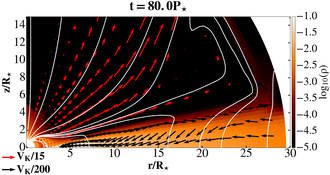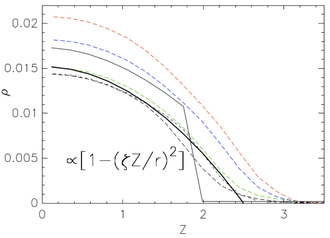
In a recent simulation of a protostar accepting matter from a disk M. Čemeljić, W. Kluźniak and V. Parthasarathy from the Copernicus Astronomical Center obtained quasi-stationary solutions of the star-disk magnetospheric interaction. The authors also explored the validity of analytic predictions for the structure of the accretion disk by comparing the predictions with the results of their simulation performed with the code PLUTO.
The equations of motion of the accreting fluid and of the evolution of the stellar magnetosphere cannot be solved analytically without knowing the detailed structure of the magnetosphere, which suffers a back reaction from the disk that is not known a priori. This is why numerical simulations must be performed in magnetohydrodynamics. However, it is still possible to make some general statements without performing simulations, especially regarding the spatial dependence of various physical quantities. The authors have shown that at distances larger than few stellar radii, the stellar magnetic field has influence in the solution for a thin disk only in the higher order terms, and this allows analytic predictions, which are in good agreement with the results of the simulation.
The picture at the top shows a snapshot from our magnetic simulation after 80 stellar rotations, when the quasi-stationary state is reached. The matter density is shown in logarithmic color grading in code units, with a sample of velocity vectors and a sample of poloidal magnetic field lines shown with the solid lines. Since the poloidal velocity in the corona is much larger than in the disk, velocity vectors are shown with a different scaling to the Keplerian velocity at the stellar surface.
The figure below shows results for the density as a function of height above the midplane of the disk at the distance of 15 stellar radii from the star, in 5 simulations with the young star rotating with 20% of breakup velocity. Solutions with different strengths of the stellar magnetic field are shown in black, green, blue and red long-dashed lines for 0.25, 0.5, 0.75 and 1.0 kG, respectively. Results in the case without magnetic field are shown with the dot-dashed line. The analytical solution, normalized to the 0.5 kG case is depicted with the thick solid line.

See the paper "A magnetized thin accretion disk: numerical simulations compared with asymptotic expansion". The work uses disk models from previous work, also carried out at the Copernicus Center, Čemeljić, 2019, A&A, 624, A31.






